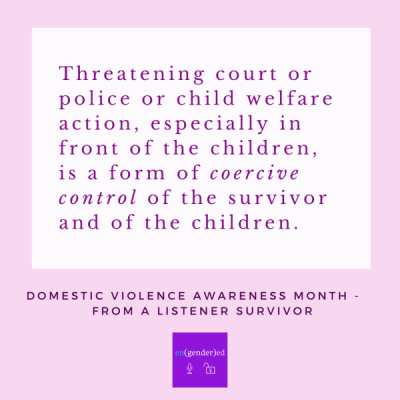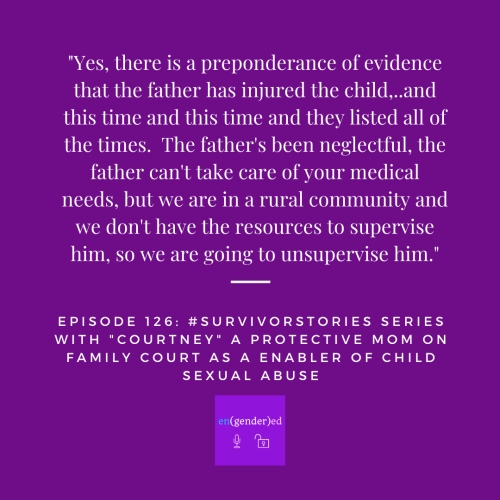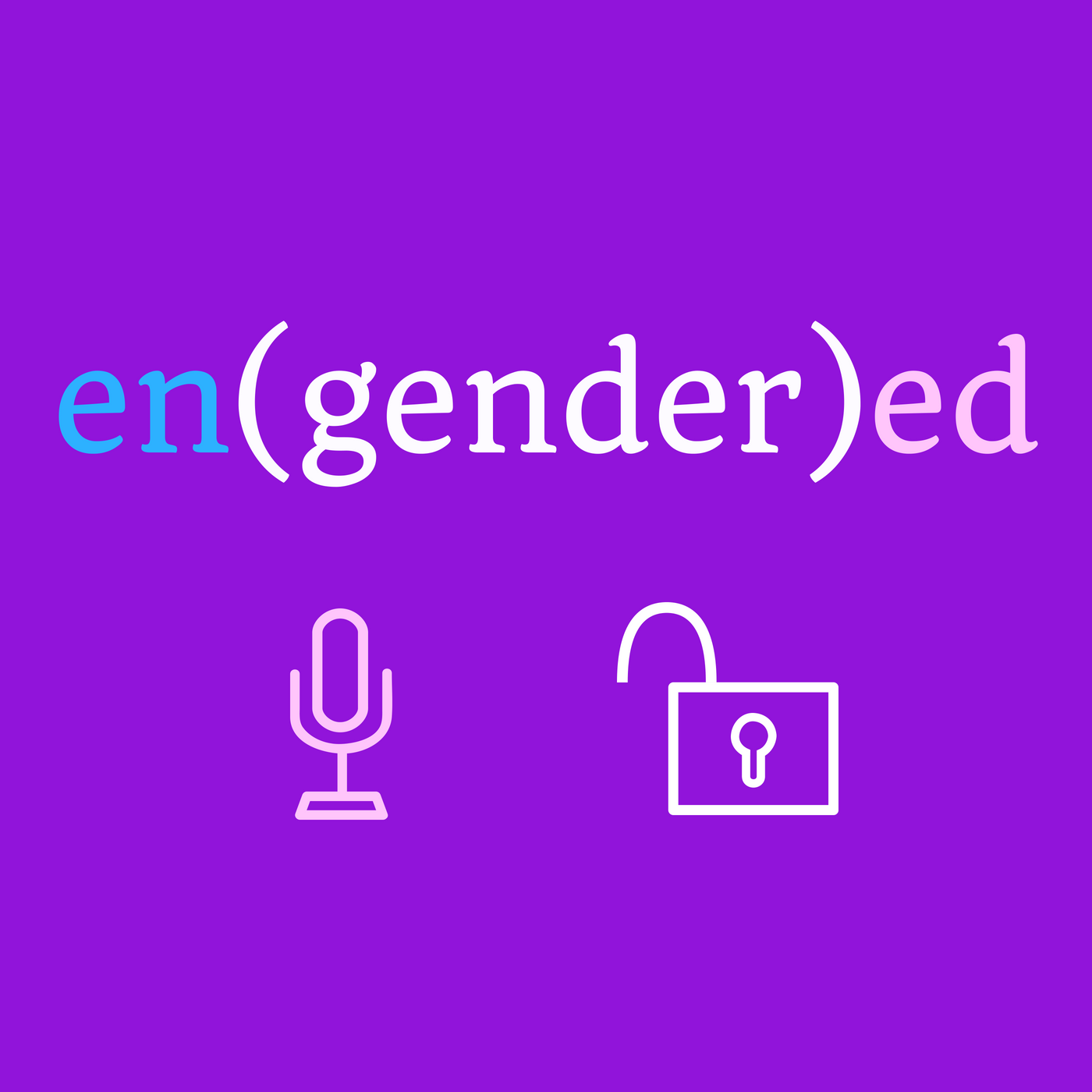
How family court has become complicit in child trafficking
For all the talk about child trafficking the conspiracy group QAnon does, you would think they would do a little research and use their platform to actually help children. No, there are no child sex dungeons in the basement of pizzerias. Democrats are not running child sex-trafficking cabals. There are, however, children being trafficked every day through the family court system, away from protective and safe parents, to abusive ones — usually fathers — who are using the family court, criminal court, and the child welfare systems, as yet, another weapon to hurt their partner or former partner.
October is Domestic Violence Awareness Month. Most of the posts you’ll see on social media will reference the impact of abuse, the often flawed statistics, but rarely will they make mention of the tactics abusers use to carry out their acts of deliberate cruelty and harm. What we need more of is a light shone on the ways in which all of us, as a society, and in our individual choices, look away when abuse comes into our lives and our inertia acts as the butterfly, whose flapping wings, sets off the tornado effect of contributing to millions of women and children across the globe living under the threat of terror and violence, every day.
“Parental Alienation” as abuser information warfare
In the United States and in many English-speaking countries around the world, abusers have weaponized the family courts as a deterrent for women to leave their abusive relationships. They have done so with a disinformation tactic called “PAS” or “parental alienation,” which first originated with Dr. Richard Gardner, a now disgraced individual, whose suicide and controversial statements endorsing incest have all but been discredited in the mental health community. Nevertheless, like QAnon has latched on to disinformation and lies about Democrats, the fathers’ supremacist movement has weaponized PAS and institutionalized it in the family court systems. Now, if women report abuse, child abuse, or child sexual abuse, and the father counter-claims “alienation,” not only are we not believed, but we are also punished for speaking out about the abuse.
The idea is based on the perception that when a parent, often the mother (and abuse victim), shares that there is abuse, child abuse, or child sexual abuse, against — usually the father — she must be doing so deliberately as a tactic to one-up her partner and gain favor in a custody battle. If the child(ren) exhibit behavior that displays fear, withdrawal, or discomfort with spending time with the other parent — usually the father/alleged abuser — the mother must be making up these claims in order to sabotage the relationship between father and child(ren). In reality, it is usually the father/abuser who alleges PAS when confronted with abuse claims as a form of post-separation abuse or coercive control of the mother and of the child.
Former President of the American Psychiatric Association, Dr. Paul Jay Fink writes about the cultural history of PAS in an article titled, “Parental Alienation Syndrome,” published in the book, Domestic Violence, Abuse, and Child Custody. He notes:
PAS has not been recognized by the American Psychiatric Association, the American Medical Association, or the American Medical Association as a legitimately researched, evidence-based condition.
But that hasn’t stopped fathers’ supremacists from memorializing it in an annual PAS ‘Day,’ nor has it diminished their decades long effort to codify it as a mental condition in the Diagnostic Statistical Manual so that mental health professionals can have another tool to use against battered women and abuse victims during a custody and/or divorce case.
Fink writes that because “PAS appears cloaked in the mantle of credibility,”
By using PAS against mothers who are trying to protect their children from abusive fathers, custody courts, in effect, overlook, excuse, and even enable the abuse and reabuse of children.
Gender bias against protective mothers
The ‘protective mothers’ community has existed for decades, ever since the 1970s, when child support enforcement laws strengthened and child custody laws became rooted in gender neutral language and policy. CUNY Professor Emeritus, Phyllis Chesler, published her seminal book, Mothers on Trial: The Battle for Children and Custody, in 1986. In it, Chesler draws attention to our five thousand year history of fathers’ entitlement to sole custody of children and the recent ways in which the male and fathers’ supremacist movement has deployed disinformation tactics to further their advantage in this realm, when a woman seeks to leave an abusive relationship. These women with children — called ‘protective mothers’ — are often threatened by their abuser with false claims of abuse against them, should they dare to leave the relationship and protect the children from abuse.
Chesler writes:
The contemporary fathers’ rights (or fathers’ supremacist) movement, which has been wildly successful in instituting joint custody and false concepts such as “parental alienation syndrome,” is also a throwback to the darkest days of patriarchy. It is not the modern, feminist, progressive movement it claims to be. Individual men may indeed be good fathers, and, like good mothers, they too may encounter discrimination and injustice in the court system. What I am talking about here is an organized political, educational, and legal movement against motherhood that has turned the clock back.
Gender bias in the family court system had become so pervasive by the mid 1980s to warrant Phyllis Chesler’s book and the widespread review of family courts across dozens of states in this country. In fact, Chesler co-organized a speakout in 1986 about mothers losing custody which drew the participation of prominent feminists; she also coordinated Congressional hearings that same year, sponsored by Senators Chuck Schumer and Barbara Boxer.
Two years earlier, in 1984, New York State formed a task force to examine the courts and identify ways in which “gender bias” manifest and make recommendations on how to “alleviate” it. Their report, titled, “Women in the Courts,” was published two years later and found systemic gender bias against women who reported abuse, sexual assault and/or rape. In discussing the ways courts view women litigants, the report acknowledged that there was “pervasive” gender bias in the form of “discrimination” with “grave consequences” which denied women “equal justice, equal treatment, and equal opportunity.” Female litigants had to navigate a system that required them to “endure a climate of condescension, indifference, and hostility.” Women who stepped into the courts encountered:
…a web of prejudice, circumstance, privilege, custom, misinformation, and indifference — affect women of every age, race, region, and economic status.
Myths about domestic abuse rooted in sexist ideology
With regard to domestic violence cases involving child custody, the Task Force found that women were “not to be believed” and due process was routinely violated through the ubiquity of myths surrounding abuse including, but not limited to:
- Mothers being dissuaded from accessing courts by having claims trivialized or ignored,
- Victim-blaming of women and presumptions they “provoked” abuse,
- Abuse being credited only when visible injury was present,
- Court personnel, including judges and attorneys, believing orders of protection were only filed by women as a “tactic” to gain an advantage or put their partner at a disadvantage,
- Routine issuance of “mutual” orders of protection without evidence, to reinforce the perception of “high conflict” where both sides are equally responsible, often violating rules of procedure, including offering prior notice and an opportunity for rebuttal or offer of proof that the woman was not violent,
- Reluctance to grant a more restrictive order of protection to hold the respondent in contempt due to the false perception that both parties were equally responsible,
- Failure by judges to consider a man’s violence towards his wife as having a negative impact on children,
- Unwillingness by judges to remove batterer from home, placing burden of abuse on mothers and children to live in shelters and endure housing instability, and finally,
- Failure by judges to enforce protection orders.
Abusers’ use of family court and PAS to harm women and children
Not surprisingly, this very thorough, well-researched and documented report and its recommendations were never widely distributed, nor was there any mechanism for rigorous enforcement. Instead, fathers’ supremacists were given a playbook that they have been using the last quarter plus century on how to use the court system against the wives they abuse who dare to leave, speak out, and “demand” that they financially support their children. This playbook includes threatening a custody battle and making false claims of abuse or neglect against the mother, inviting child welfare or criminal court intervention.

A quick search on search engines can generate hundreds of resources for fathers who want to avoid paying child support and gain custody of the children. For most who are in the beginnings of a marriage dissolution, these tips might seem innocuous. For an abuser, they are the equivalent of ammunition they are acquiring to build their terrorist arsenal. It doesn’t help that the fathers’ supremacist movement has all but indoctrinated generations of judges, attorney, and mental health “professionals” in their information warfare tactic, with thousands of these individuals receiving CTE or continuing education credit for their respective professions by attending “PAS” workshops run by quacks. Imagine there being a comparable conference run by Fox News for journalists on “fake news,” defined by anything that is factual, evidence-based, science-driven, and verifiable. PAS is the family court version.
It’s not surprising then, given this ecosystem of support for disinformation, Professor Joan Meier found, in a DOJ sponsored study, that mothers who claim abuse, child abuse, or child sexual abuse, were likely going to lose custody to their abusive father when the father counter-claimed with “alienation.” The likelihood increased exponentially when you had the presence of an Attorney-for-the-Child or Guardien Ad Litem or a Custody Evaluator (who likely didn’t meet any eligibility criteria, including having an understanding of the dynamics of abuse, power and control, and/or trauma).
Given these statistics, it is imperative that we all disabuse ourselves of the myths surrounding domestic abuse and child custody. I’ve interviewed and met so many protective moms whose children, they believe, were/still are being abused or sexually abused. One mother I met was forced to bring her children to visit their father, a convicted child pornographer, in jail. During that time, he schemed to use her parenting choices, such as whether she brought his favored side dish for Thanksgiving, against her. When he was released, he was able to use his manufactured claims of “alienation” against her to win custody.
Just like Trump regularly accuses fact-based journalism of being “fake news” — when he is the one who spouts lies and untruths, multiple times a day, every day, for the past three and a half years — abusive fathers are spouting “PAS” claims to discredit women’s behaviors when we seek to protect our children from their abuse.
Survivor and protective mom, “Courtney,” describes how her ex-husband has admitted to police his sexual assault of a four-year old girl, when he was sixteen years old and the girl was in his care.

Despite this admission, and the numerous other disturbing reports by medical and mental health professionals in Courtney’s case that her son’s physical and emotional symptoms were likely due to some sort of sexual violation — in this case, by the boy’s father — Courtney’s ex-husband moved from a few hours a week of supervised parenting time to unsupervised, more frequent, and lengthier parenting time due to the court’s logistical constraints. As a result, this child was repeatedly returned every week to spend unsupervised time with him. These examples are not the exception — they are the rule.

In his paper on “Parental Alienation Syndrome,” Dr. Paul Jay Fink describes another particularly egregious case of family court complicity with child sexual abuse. The case, held in Marin County, California, had both girls already substantiate sexual abuse by their father, which was also validated by the youth agency involved. Dr. Fink writes:
“However, the judge in the same county would not allow the evidence to be presented. Ultimately, custody of the children was given to the known predator. The judge might call this justice. Almost anyone else would call it a miscarriage of justice.”
Impact of abuse on children
A comprehensive and trenchant analysis of the family court gender bias crisis is depicted in the recent documentary, “What Doesn’t Kill Me,” by filmmaker Rachel Merrick (Full Disclosure: I’m featured briefly in it). The film does a great job of outlining the trajectory a protective mother faces when she decides to leave her abuser and traverse the dangerous waters of family court, often getting pulled in the criminal court or the child welfare system ‘planet.’ By the time she gets out, if she’s lucky, the children are living with their abusive father, traumatized, and suffering and subject to years of undoing of accumulated ‘Adverse Childhood Experiences’ or ACEs.
What’s a mother to do when she is faced with symptoms of her child’s trauma, but can’t act accordingly to address it? In a 2018 Monroe County decision involving PAS allegations against the mother, social worker, Linda Gottlieb,
This is the level to which this absurdity had hindered protective moms from engaging in mothering itself. I know personally of dozens of mothers who were forced to stop breastfeeding their babies because abusive fathers demanded that they have age-inappropriate time with the child before the child was ready to wean — I was one of them. And rather than comfort the baby or toddler, we had to ignore our natural instinct to engage in attachment parenting, so as to avoid being accused of being “enmeshment” or some other type of pathology. I shudder to think what level of healthy attachment our kids have or don’t have today because of those choices. This is why, in my opinion, “parental alienation” poses the biggest threat to protective mothers and their children being able to seek safety, security, and stability.
The costs of abuse extend beyond the dollars and cents
A CDC report from 2003 estimates the costs of intimate partner violence to be around $6 billion a year. This number doesn’t include the criminal justice, social service and increased costs of long-term health care risks stemming from trauma. It also doesn’t include the cumulative cost to the children in damage to their development, increased ACEs consequences as an adult, and lost productivity in education and work.
If we want to build a thriving economy and society, women and children’s health and safety has to be central to any economic and social policy. We must embed gender equality into our infrastructure. Only then will every member of our society be able to fully access the rights, resources, and opportunities, afforded now, mainly to men. I imagine a day when women can walk into a courtroom to ask for help, receive it, be believed, and have her claims be adjudicated fairly. Until then, the price paid by our entire society is going to be borne in lost lives, stolen childhoods, diminished spirits, and unrealized dreams.
Follow our Publication, subscribe to our podcast, and join our community to stay abreast of the work we are doing to build a culture of accountability and center safety and security for survivors of domestic abuse.

